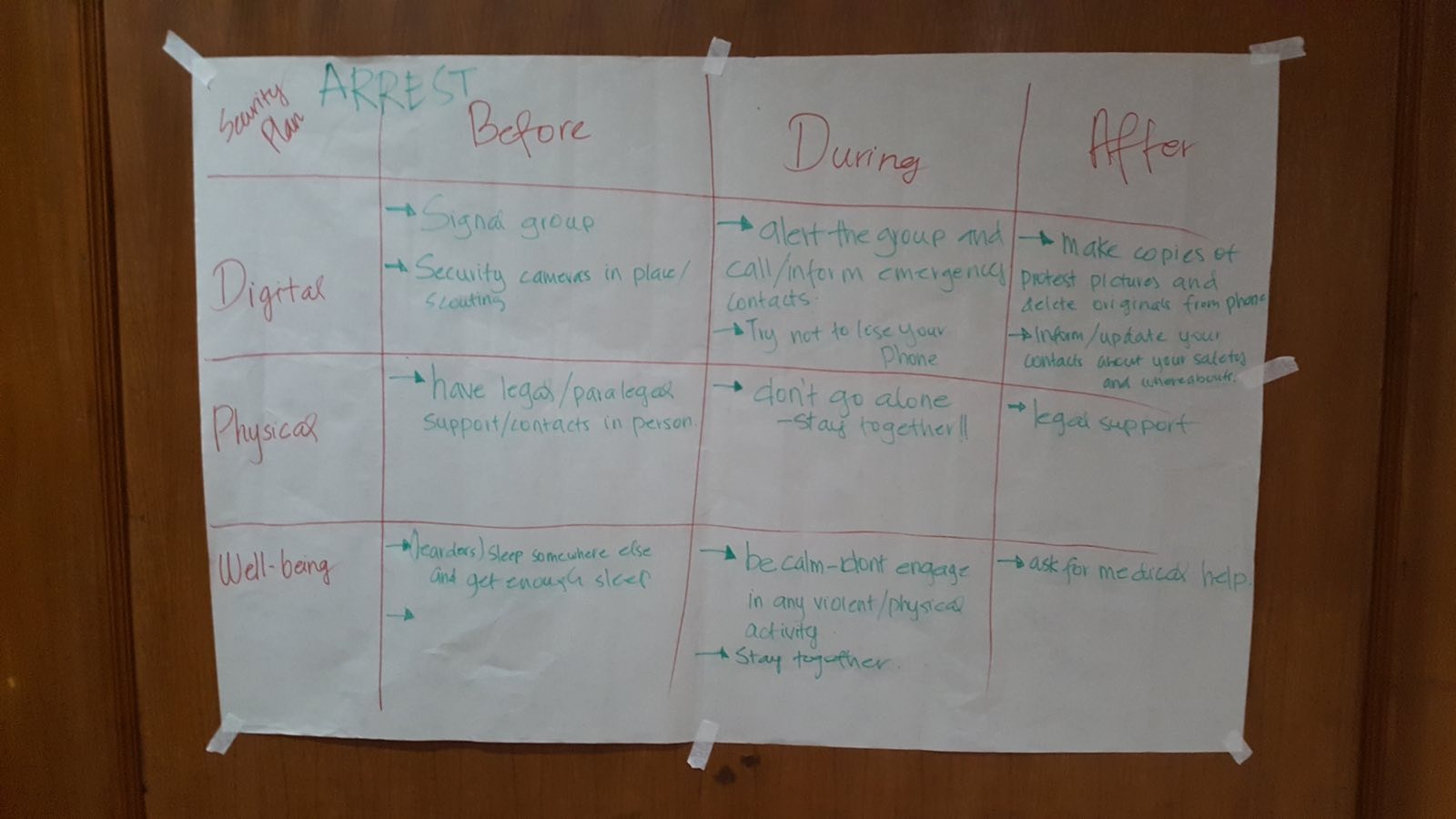|
OBJECTIVE |
|
|
TIMING |
75 minutes |
|
TIME BREAKDOWN |
Introduction - 5 minutes Group work - 30 minutes Feedback & discussion - 30 minutes Individual work - 5 minutes Conclusion - 5 minutes |
|
MATERIALS NEEDED |
Flip charts & marker pens |
When planning and facilitating this session, it is important to consistently apply an intersectional lens to each participant's identity and experiences, and their protection needs. Overlapping systems of discrimination and privilege, such as gender, sexual orientation, religion, disability, racial and/or ethnic origin, economic status/class, marital status, citizenship, age and physical appearance, can have a profound impact on human rights defenders' and their communities' perception of and experience with risks and protection.
Introduction: 5 minutes
- For different threats, different tactics are usually required, eg if the main threat is arrest, wearing a bullet proof cap will not help
- In this exercise you will develop a list of tactics that help protect a defender against the threat
- However remember that everyone needs to customise a protection plan for a specific threat based on their unique context and intersectional ity (eg a person of colour may be more at risk whilst working to assist migrants and refugees)

Exercise: 30 minutes
Then facilitator splits the full group into 3 and gives them each a task based on the threats identified by the participants in their registration forms, or earlier in the workshop:
Develop a protection plan in a case of ..... (physical attack, arrest, online defamation etc, here just called "the attack");
- What can you do in advance to reduce the probability?
- What can you do during the attack to reduce impact?
- What can be done after the attack to reduce impact?
Participants should write the results up on a flip chart which can be displayed, which will be useful for future sessions.
Feedback & discussion 30 mins
The facilitator manages the feedback and discussion of the questions and issues raised.
Individual work 5 mins
Participants consider what they need to add to their personal and organisational protection plan lists from this session.
Closing remarks 5 mins
The facilitator summaries key learning points, including:
- protection is 90% preparation and 10% reaction; the more time you spend on preparation, the less likely it is that threats will materialise
- as your protection plan develops to cover more threats, the measures you take will cover many unanticipated threats too
Reference materials:
Many tactics are contained in the Appendices of the Security Workbook, such as Appendix 9, Risk of Detention, Arrest or Abduction; Appendix 10, Risk of Assault.
